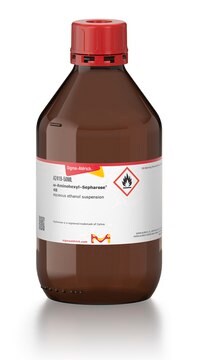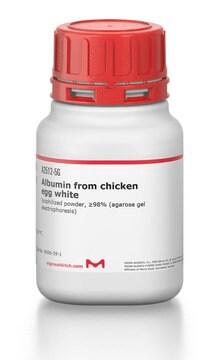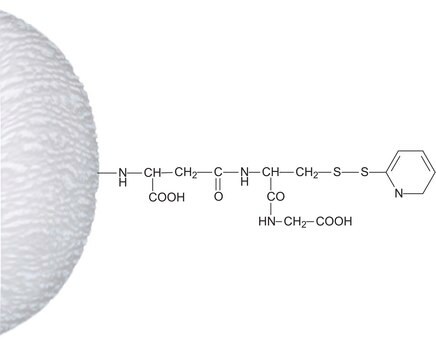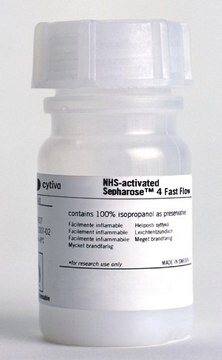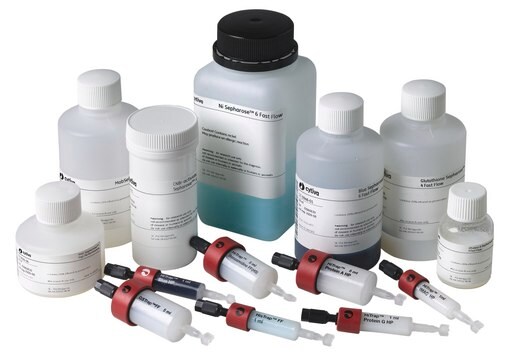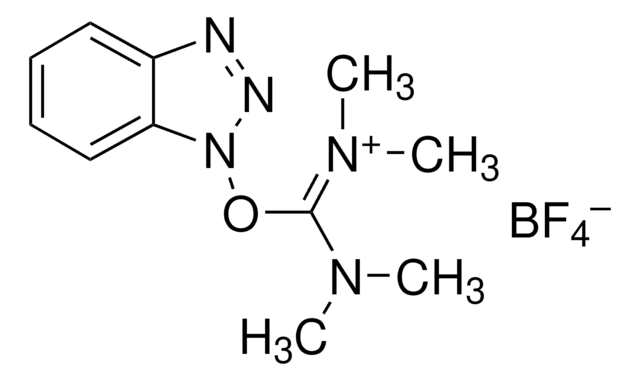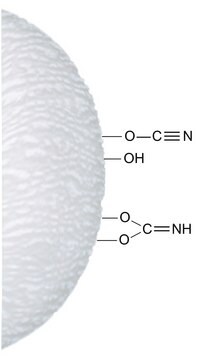A6017
ω-Aminohexyl–Agarose
saline suspension
Synonym(s):
Omega-Aminohexyl-Agarose, 1,6-Diaminohexane–Agarose (N-linked), 6-Aminohexyl–Agarose
About This Item
Recommended Products
biological source
plant
Quality Level
form
saline suspension
extent of labeling
≥5 μmol per mL
technique(s)
affinity chromatography: suitable
matrix
cross-linked 4% beaded agarose
matrix activation
cyanogen bromide
matrix attachment
amino of 1,6-diaminohexane
matrix spacer
1 atom
capacity
≥5 mg/mL binding capacity (bovine serum albumin)
suitability
suitable for chromatography
storage temp.
2-8°C
Looking for similar products? Visit Product Comparison Guide
General description
Application
Biochem/physiol Actions
Physical form
Other Notes
Signal Word
Danger
Hazard Statements
Precautionary Statements
Hazard Classifications
Eye Dam. 1 - Skin Irrit. 2
Storage Class Code
10 - Combustible liquids
WGK
WGK 3
Flash Point(F)
Not applicable
Flash Point(C)
Not applicable
Personal Protective Equipment
Certificates of Analysis (COA)
Search for Certificates of Analysis (COA) by entering the products Lot/Batch Number. Lot and Batch Numbers can be found on a product’s label following the words ‘Lot’ or ‘Batch’.
Already Own This Product?
Find documentation for the products that you have recently purchased in the Document Library.
Customers Also Viewed
Our team of scientists has experience in all areas of research including Life Science, Material Science, Chemical Synthesis, Chromatography, Analytical and many others.
Contact Technical Service